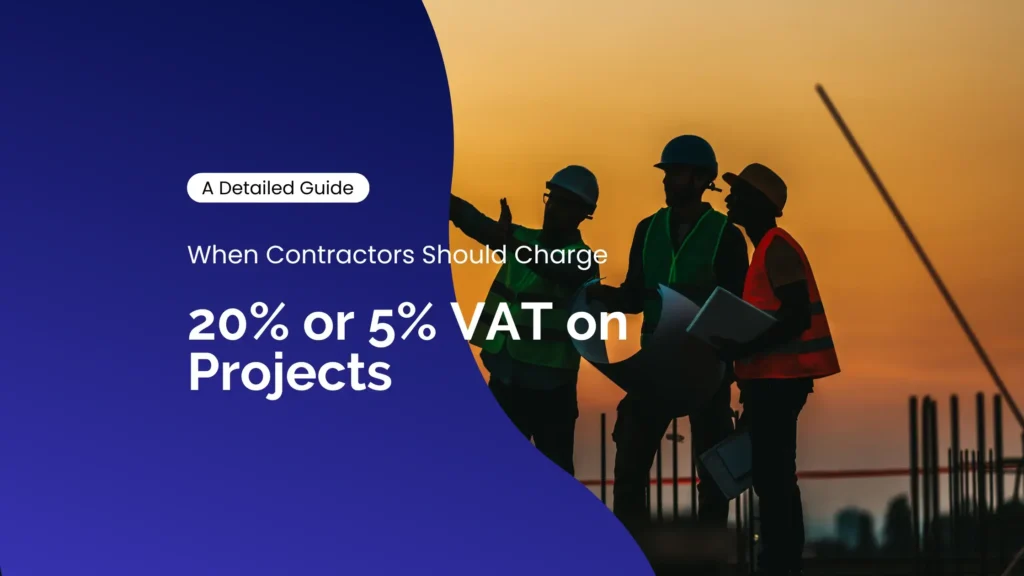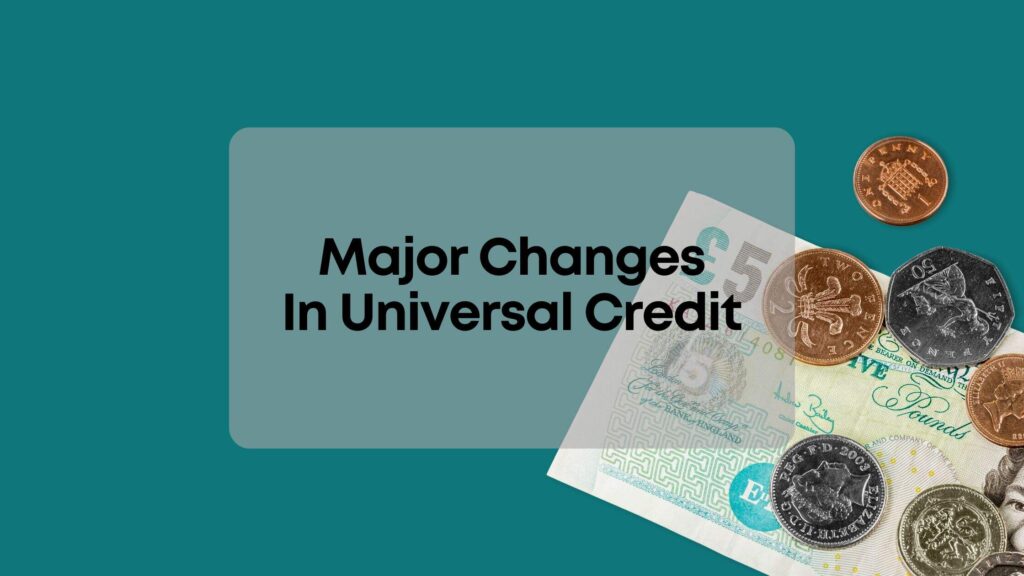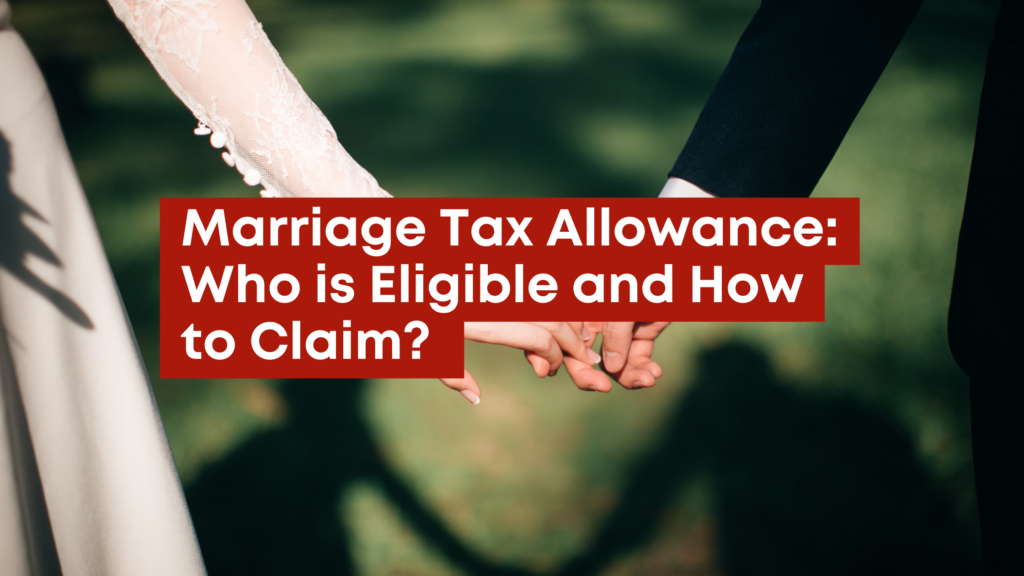VAT is an essential consideration for UK contractors. Most projects are charged at 20%, but certain construction and renovation work can qualify for the reduced 5% rate. Knowing when to apply the correct rate is important for two reasons:
- Legal compliance – charging the wrong rate can lead to HMRC penalties or costly corrections later.
- Client trust and competitiveness – applying the correct rate can save customers money and make quotes more appealing, especially in projects like renovations or energy-saving installations.
Understanding when to charge 20% vs 5% VAT ensures contractors stay compliant, protect their reputation, and offer fair pricing.
When to Apply the 20% VAT Rate on Building Projects
The standard VAT rate of 20% is the default rate applied to most building and construction services in the UK. Contractors are required to charge this rate whenever a project does not qualify for the zero rate (0%) or the reduced rate (5%) as defined by HMRC. Understanding when the 20% rate applies is crucial to ensure compliance and avoid issues with HMRC.
Where 20% VAT Applies
- New builds – If the project does not meet HMRC’s zero-rating conditions (brand new dwelling, self-contained, and with residential planning permission), contractors must charge 20% VAT.
- Commercial property work – General building services on commercial properties, such as offices, shops, warehouses, or industrial units, are subject to the standard rate. This includes both new construction and renovation work.
- Conversions – If a project involves converting a building but does not meet HMRC’s requirements for the reduced rate, such as certain residential conversions, the 20% rate applies.
- Renovations and extensions – Any renovation or extension work that doesn’t qualify for the reduced 5% rate must be charged at 20%. Check below to see when reduced VAT can apply.
- Maintenance, repairs, and improvements – Routine repairs, general maintenance, and non-specialist improvements on residential or commercial properties are subject to 20% VAT. Includes tasks like fixing roofs, updating interiors, or general refurbishment.
When to Apply the 5% VAT Rate on Building Projects
The VAT rate of 5% applies only in certain situations set out by HMRC. Contractors can charge this rate when the work meets the qualifying rules.
When 5% can be charged:
- Residential conversions – changing a non-residential building into a home, or altering the number of dwellings. (e.g VAT on new homes and flats).
- Renovation of empty homes – work carried out on residential properties that have been unoccupied for at least 2 years.
- Energy-saving materials and heating – installing approved energy-saving products like insulation, solar panels, or heat pumps, and fitting certain heating systems in homes.
- Other qualifying works – Include projects on charitable buildings and specific cases covered under HMRC VAT Notice 708.
In simple terms, the 5% VAT rate is available only for specific residential and energy-related projects. If the work doesn’t fall into these categories, the standard 20% rate applies.
Accountancy Services for Construction Companies
→ Enjoy 60 Days Free Trial
→ No Strings Attached, No Catch!
Book an AppointmentLearn MoreUnderstanding 20% and 5% VAT for Builders and Contractors
- Charge 20% VAT for most projects: standard renovations, repairs, new build VAT exemptions, commercial work, and any conversions that don’t meet HMRC’s reduced rate rules.
- Charge 5% VAT : only for qualifying residential conversions, renovations of empty homes, and approved energy-saving or heating installations.
| Feature | Standard 20% VAT | Reduced 5% VAT |
|---|---|---|
| Default rate | Most building and construction work | Only in specific cases defined by HMRC |
| New builds | Charged if not qualifying for zero or reduced rate | Not applicable |
| Conversions | Charged if it doesn’t meet reduced rate rules | Residential conversions, e.g., office → flat, or one house → multiple flats |
| Renovation work | Standard renovations or extensions | Work on homes empty for 2+ years |
| Energy-saving work | Not applicable | Installing approved insulation, solar panels, heat pumps, or certain heating systems |
| Commercial properties | All work on offices, shops, warehouses | Not applicable |
| Other works | Maintenance, repairs, general improvements | Some charitable projects and other cases under HMRC VAT Notice 708 |
Make sure your quotes and invoices use the right VAT rate. For advice on applying VAT correctly, consult HMRC VAT Notice 708 or speak to a VAT specialist today.
Any Questions About 5% and 20% VAT on Construction Projects?
It is normal for builders and contractors to be unsure about the correct vat rate to apply or worried that HMRC might question it. Choosing between 20% standard VAT and the 5% reduced rate can be confusing, especially for projects like conversions, renovations, or energy-saving work. If you have any questions about when to use 5% or 20% VAT on your building or renovation projects, contact our advisory team for clear and expert advice. Plus, enjoy a 2 Months Free Trial of our construction accountancy services!





